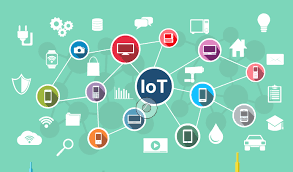Internet of Things or IOT describes the network of physical objects—a.k.a. “things”—that are embedded with sensors, software, and other technologies for the purpose of connecting and exchanging data with other devices and systems over the Internet.
Things have evolved due to the convergence of multiple technologies, real-time analytics, machine learning, ubiquitous computing, commodity sensors, and embedded systems. Traditional fields of embedded systems, wireless sensor networks, control systems, automation (including home and building automation), and others all contribute to enabling the Internet of things.
There are several top devices in the market. Smart Mobiles, smart refrigerators, smart watches, smart fire alarm, smart door lock, smart bicycle, medical sensors, fitness trackers, smart security system etc., are few examples of IoT(Internet of Things) products.
Applications:
- Smart home. Smart Home clearly stands out, ranking as highest IoT(Internet of Things) application on all measured channels.
- Wearables.
- Smart City.
- Smart grids.
- Industrial internet.
- Connected car.
- Connected Health (Digital health/Telehealth/Telemedicine)
- Smart retail.
Biggest challenges of IoT:
- Stronger AI Attacks.
- Cloud Attacks.
- Consumer Perception.
- Lack of Logging.
- Data Security and Privacy Issues.
Disadvantages:
- Security and privacy. Keeping the data gathered and transmitted by IoT(Internet of Things) devices safe is challenging, as they evolve and expand in use.
- Technical complexity.
- Connectivity and power dependence.
- Integration.
- Time-consuming and expensive to implement.
Can IoT take over human mind?
Indeed, the potential of IoT will not materialize without the ability to collect, aggregate and analyze the enormous amount of data created by IoT devices, either by AI alone or supported by human intelligence. Machine learning approaches and human intelligence should be integrated to keep ultimate human control.
What is the impact of IoT?
The positive impact of the IoT on citizens, businesses and governments will be significant, ranging from helping governments reduce healthcare costs and improving quality of life, to reducing carbon footprints, increasing access to education in remote underserved communities, and improving transportation safety.
What is IoT cloud?
An IoT cloud is a massive network that supports IoT devices and applications. An IoT cloud also includes the services and standards necessary for connecting, managing, and securing different IoT devices and applications.





